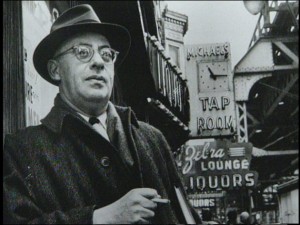Saul Alinsky & Back of the Yards: A Pivotal Labor Strike

Saul Alinsky invented community organizing in Chicago in the 1930's. Eastern European immigrants in the Back of the Yards area organized and went on strike against meatpacking plants. After pitched battles, both political and physical, the workers forced concessions and unionized the plants. This was the first time organizing had been done in a geographical area and it changed organizing forever.
Generations of organizers both on the left and the right have studied and learned from what Alinsky did. This includes right-wing videographer James O’Keefe who took down ACORN. He cites Alinsky as a major influence, as do countless others.
But first, let’s get rid of a major misconception. Alinsky was not socialist and could not have accomplished what he did at Back of the Yards if he had been. In fact, he thought socialists were useless. Decades later he said "quotes from Mao, Castro, and Che Guevara – are as germane to our highly technological, computerized society as a stagecoach on a jet runway at Kennedy airport."
One tactic Alinsky used to organize Back of the Yards was going to the various Catholic churches in the area and telling their clergy if I don’t organize here, the communists and socialists will. But if I do organize, and the workers win, then that means more money in the collection plates on Sundays for you. The Catholic Church was strongly anti-communist and joined with Alinsky in a partnership. He now had a powerful, politically connected ally.
Conservative pundit William F. Buckley said Alinsky was "very close to being an organizational genius.” Alinsky and his organizers would come to an area only after they had been invited. They would talk to people, learn about their needs and concerns, and then start a group to help them organize. But as soon as possible, they would get out of the way and let the people in the community run it. This is real people power, organizations run by people in their own communities. “This has been our operating procedure in all our efforts; we're outside agitators, all right, but by invitation only. And we never overstay our welcome,” he said. They always left within 2-3 years. Most importantly, and this is a huge difference between Alinsky and Marxist organizers, he did not push a preconceived agenda but rather encouraged the community to determine their own goals.
By the 1960’s the Back of the Yards organization had become reactionary. Alinsky said then we go back and organize it again. But - and this is the true measure of the man –he said “I knew when I left Back of the Yards in 1940 that I hadn't created a utopia, but people were standing straight for the first time in their lives, and that was enough for me.”
And he had a sense of humor. When his “Rules for Radicals” was published and received glowing reviews, Alinksy told his staff, “Don’t worry, boys, we’ll weather this storm of approval and come out as hated as ever.”
For more on Alinsky, I recommend the extensive 1972 Playboy interview with him.




